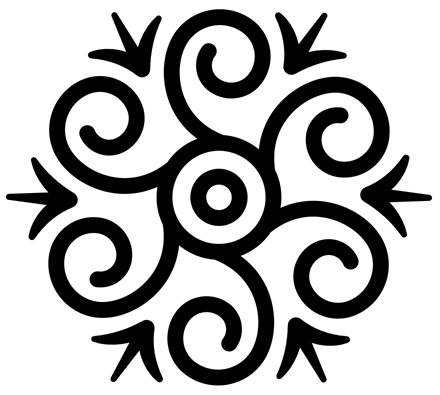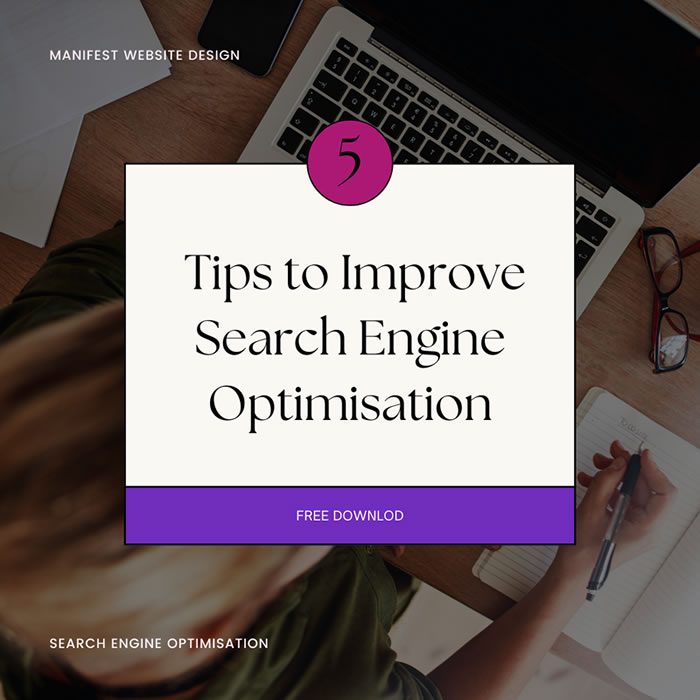How to Write Great SEO Content
Published on May 6, 2023
At Manifest Website Design, we make a lot of content on a daily basis – from long-form blog posts, website landing pages, videos, social media graphics, onboarding documents, and so forth. Needless to say, I think we’re experienced enough to know a thing or two about creating content, but not just the type that attracts clients. We make great content that even search engine crawlers love to push up in the search results.
So how to write great SEO content? That’s the million-dollar question. The simple answer is that you need to write for humans first, search engines second. Do keyword research, know your audience, and write like you talk. The convoluted answer is that you need to play the long game. Put in the work and prove to Google that you deserve to be on the first page.
How to Write Great Content That Satisfies People and Search Engines
If there’s one thing I want you to take away from this article, it’s that you should always write for humans first, search engines second. You want to resonate with real people with real feelings and real thoughts. You’re not talking to robots.
Related article: A Beginner’s Guide to Digital Marketing
1) Start With Keyword Research
Start by zeroing in on a list of content topics relevant to your niche and audience. What problems do your customers care about? How can you make them intrigued and engaged by your content? Which keywords would your target audience most likely use?
Look for ideas on Wikipedia, Reddit, Quora, AnswerThePublic, Twitter, or any platform your prospects spend a lot of time on. See what they’re asking. Stay updated on industry news and trending topics to maintain the relevance of your SEO content strategy.
Pro tip: If you’re just starting out with SEO content writing, I recommend prioritising long-tail keywords since these tend to have less competition and higher conversion rates.
2) Sprinkle Keywords in Your Headings and Text
It’s important that you include your target long-tail keyword at least once or twice in your article. After that, incorporate it only when it fits in with your piece naturally. Find the right balance between using your chosen primary and secondary keywords effectively. Don’t even try keyword stuffing – Google can tell and will most likely penalise your site.
Before typing away on your computer, create an outline that strategically uses keywords in the title and headings (H1, H2, H3, and so forth). This makes your content digestible and easy to read for both the reader and search engines.
Here’s how the SEO-optimised outline looks for this article that you’re reading:
While coming up with the angle of your article, consider your users’ search intent. Are they looking for information or do they intend to make a purchase?
For example, someone searching for “how to clean my living room” would have a different intent from someone who types “housekeeping services Australia”. The four types of search intent are navigational, informational, commercial, and transactional.
3) Answer the Question Well and Instantly
When writing great SEO content, one of the best practices is to provide a clear and concise answer to the user’s query right from the beginning.
Use the inverted pyramid style of SEO writing: Present the most important information first, followed by supporting details.
For example, if you’re writing for a real estate agency, one of your long-tail keywords could be “best time of year to buy a house”. Give the direct answer within the first two paragraphs of your article, then proceed with your main arguments.
4) Write Long-Form Content
Long-form content (articles with over 1,000 words) typically perform better in search engine rankings and user engagement. This is because long-form blog posts provide more opportunities to include valuable information, keywords, and context, which can help search engines better understand the topic and relevance of your content.
Avoid creating long content for the sake of length alone. Make sure that every section of your article adds value and serves a purpose. As mentioned, break up your content into smaller, digestible sections with subheadings to improve readability. Adding filler or fluff won’t do your website any good; people will just think that you have nothing substantial to say.
Pro tip: Give your post a unique angle. Thousands of blog posts – maybe even millions – are being published every day. Find a way to stand out and add creative flair. Add unique illustrations; talk about personal experiences; provide solid data.
5) Use SEO Tools (Optional)
While the fundamentals of writing great SEO content rely on research, creativity, and skill, you may opt to use digital tools (e.g., SEMrush, Ahrefs, Google Keyword Planner, Yoast, SurferSEO) to optimise your content further. However, it’s important to remember that tools should complement your writing process, not dictate it.
Here at Manifest Website Design, we like to use SEMrush to communicate a clear ROI to our clients (we’re not sponsored, we just swear by this tool). We get to highlight what we’ve done, as well as how much they’re getting in return for their SEO marketing investment.
In case you’re interested, we offer free SEO audits. Feel free to request one here.
6) Incorporate Internal and External Links
Incorporating both external and internal links in your content can significantly improve your website’s SEO performance. When linking externally, choose reputable sources that provide valuable and relevant information to your readers. This can help you build trust with your audience and establish yourself as a reliable and well-informed resource.
Internal linking, on the other hand, involves linking to other pages within your own website. This helps search engines better understand the structure of your website and can lead to improved indexing and crawling of your pages. I like to use the topic cluster model as part of my link building strategy.
Pro tip: Google shares link value across all links on a page, with the homepage typically having the highest value. If you want to boost the link value for new blog posts, link them from the homepage, so that Google can find and rank them quickly.
7) Add Images and Other Engaging Media
Humans are visual creatures by nature.
Remember when teachers should use flashcards and images to teach us new topics back in school? That’s because a lot of us are visual learners that can retain information better through the use of visual aids. What’s fascinating is that some of these visuals often stick to our minds for a long time – sometimes even for our entire lives.
That said, I highly recommend that you incorporate visual elements (e.g., images, infographics, videos) in your content to make it more engaging and enjoyable for your target audience. Visual content not only breaks up large blocks of text, but it also helps convey complex information more effectively.
You could also add other forms of media like videos, podcasts, and interactive elements to diversify your content and cater to different user preferences. This, in turn, increases user engagement, social sharing, and overall content value.
8) Optimise Your SEO Elements
Beyond creating high-quality, engaging content, it’s crucial to ensure that your SEO elements are also optimised. This includes aspects like your title tag, meta description, URL structure, and header tags.
Your title tag should be attention-grabbing and include your focus keyword. It should be concise, typically no longer than 60 characters, so that it displays correctly on search engine results pages.
The meta description should provide a brief overview of your content and include your target keywords. And as for your URL structure, it should be clean, descriptive, and easy to understand.
The file names and alt text of your media also tell search engines what your content is about. For example, it would be more appropriate to label an image “office-building-front-view” than “IMG_1234.jpg”. If you’re going to use videos, embed these from external sources instead of hosting on your website.
Create Content Everyday – No Excuses
As you may have probably realised by now, SEO isn’t a skill you gain mastery in overnight. If you want to write great SEO content, you actually need to write a lot. You won’t get it right the first few times.
Don’t wait for inspiration to strike. You have to be disciplined. By setting strict deadlines and producing new content consistently, you’ll inevitably get better at the craft. If you want to start small – say, one post a week – that’s completely fine. SEO is about quality over quantity.
Commit to the long game. Once your content starts ranking on search results, I promise that it’s a different kind of feeling to see all your efforts finally produce the results you’ve been wanting.
Pro tip: You are what you E-E-A-T (experience, expertise, authoritativeness, trustworthiness). Follow the SEO content guidelines of Google and your website will stand the test of time, changing algorithms, and cutthroat competition.
Let Me Know if You Need Help Writing Great SEO Content
Learning how to write great SEO content isn’t easy. It involves a combination of meticulous keyword research, getting to know your audience to the T, and optimising every element on the page. If anything, it’s not something that can be accomplished overnight nor is it possible to reach the first page of Google every time you publish a blog post.
On another note, keep in mind that as a writer, you’re too close to work. You may have blind spots, grammar mistakes, and poorly phrased sentences that you’ll never notice. If you’d like a second person’s opinion or have any questions regarding SEO content, please feel free to reach out to me. I’d be more than happy to help you out.
But if you’re here for a free SEO audit, click here to request for one.

ANA AMISTAD
About the Author
Ana is a Content Manager at Manifest Website Design specialising in digital marketing, SEO, and meaningful stories. Her byline is often found 3,000 feet above sea level.
After hours, she enjoys psych thrillers, reading, dying in video games, and having good conversations. You can reach out to her on LinkedIn.









